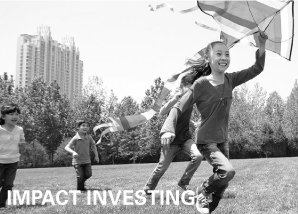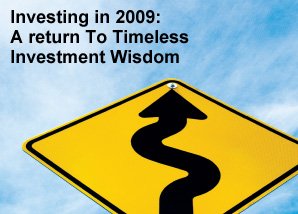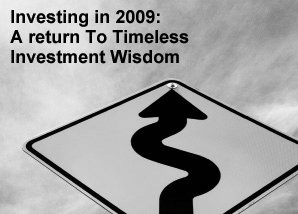Investing during an economic slowdown – what, when, and how
The announcement of Malaysia’s budget for the year 2016 has raised many questions amongst citizens. While it may consist of some good news (RM41.3 billion for education, BR1M subsidy increase, minimum wage of up to RM1,000/month), much of the budget does not cater to upper middle or high-income earners.
In fact, income tax for those who earn RM600k to RM1 million per year has been raised from 25% to 26%, and those who earn more than RM1 million a year will have to pay 28% in income tax1.
Additionally, Malaysia is experiencing an economic slowdown due to a fall in oil prices, currency depreciation, and loss in investor confidence2. A recession is defined as “a period of economic decline during which trade and industrial activity are reduced, generally identified by a fall in Gross Domestic Product (GDP) in two successive quarters.”2Even though Malaysia is not technically in a recession (the country is still having positive GDP growth), the economic situation in Malaysia is no longer ideal. In light of this, how can high-income earners continue to protect their assets and reduce their losses?
There are a number of strategies that may help, but a clear understanding of how the business cycle works would be a good place to start.
The phases of the business cycle3
Generally, the business cycle has 4 main parts that extend over a period of years. They may differ substantially in duration but are all equally as important and remain closely linked to the health of the overall economy.
Things aren’t looking too good. What now?
Understanding the business cycle only matters if it helps to improve investor returns. But the question is, what remedies are available to investors? What investments are most heavily affected? These are all complicated questions to answer and it really depends on your specific situation.
Managing your particular investments depends on various factors such as your risk appetite. A conservative investor may choose to sell first, but an adventurous one may decide to ride out the storm. Here are a couple of general steps that everyone can take to complement their personal preferences.
Take a look at the big picture
The key to making good investments before, during, and after a recession is to keep an eye on the horizon instead of focusing on the minute details4. Don’t immediately sell all your assets, even though it can be tempting to do so when stock prices begin to fall. Most financial advisors agree that it is a bad idea to start selling at the first sign of a recession, as stock markets move several months ahead of the economy5.
Evaluate your investments
Your portfolio will determine the risk exposure that you will have to face during a slowdown. If there is a lot of high-risk debt or shares from new or struggling companies, your investments may experience substantial losses. If the companies backing your investments fail during the slowdown, your losses may not be recovered. Assessing your portfolio’s unique makeup will allow you to make the best decision for yourself6.
Decide which investments to keep
Large, established companies are generally able to weather a slowdown better than a new or inexperienced company5. Having access to capital reserves along with many years of accumulated knowledge allows them to withstand most economic slowdowns. Existing investments in such companies are better left untouched, as they will most likely recover after the slowdown5.
Decide which investments to sell
If you have invested in what are known as cyclical companies (companies that have a high debt to asset ratio), you may consider selling those investments. These companies survive on discretionary spending and consumer confidence, which can be flaky. Industries in this category may include consumer electronics and luxury clothing, and a recession usually results in a decline in sales. Highly leveraged companies may also be unable to pay off their debts during a slowdown7.
Available Investment Opportunities
Counter-cyclical stocks
These stocks tend to do well during recessions, as it is composed of companies with large balance sheets, reliable business models and high dividends7. They are even called “recession proof” sometimes. Examples within this group include consumer staples (FMCG industry) and utilities. Be careful to adjust your portfolio once the economy starts recovering though, as these stocks tend to fall when cyclical companies start bouncing back.
Government bonds
These investments serve 2 purposes – they are incredibly resilient to devaluation, and they also tend to increase in value during a recession5. Some foreign bonds could be as reliable and will help you withstand the economic slowdown. The Malaysian bond market is also expanding, and offers a wide variety of debt securities products8.
Gold
One of the most desirable commodities is gold. Gold is negatively correlated with equities (which means gold price movements are not directly affected by the stock market) and often considered a good hedge against inflation9. Research by the Federal Reserve shows that the price of gold has a long way to go before it becomes overvalued10. The HSBC Gold Account* offers you the opportunity to place deposits where the amount deposited will be converted and recorded in Gold units. Other precious metals are a good option as well.
Mutual funds
With the added benefit of automatic diversification, mutual funds have been designed to grow through numerous market conditions. This works especially well because it averages your profits and losses to make up a balanced portfolio. In addition, the depressed value of stocks during an economic slowdown makes it a good time to buy into a mutual fund, as it would likely grow quickly by the end of the slowdown6.
The sun will come up tomorrow
Preparing for recovery is an equally important part to consider. As the economic slowdown draws to a close, you need to take a few steps to make sure your investments are in order.
Re-evaluate your portfolio
During the slowdown, did some of your investments do better than others? Were you surprised by how some things turned out? It is best to learn from these patterns that are specific to your particular portfolio and investment style so that you may prepare for a future recession, if there is one. If some of your investments did not recover as much as you expected, give them some time to rebound if you continue to have faith in that company5. Furthermore, do consider the effect that the slowdown might have had on foreign markets if you have any foreign investments. Sometimes there are widespread recessions, and it’s better to be safe than sorry.
Reintroduce risk
Now that stock prices are going back to pre-recession levels, this would be the best time to invest (or reinvest) in the cyclical companies that made it through. Within equity markets, high performing stocks often use operating leverage to complement their day-to-day business activities4. Bear in mind, companies that leverage grow really quickly during good times, but they may also crash really fast during bad times. It will be best to pick these investments carefully, as an overall market recovery does not mean that a specific stock will increase in value5.
In conclusion, the best thing to do during an economic slowdown is to manage your risks or exposures while continuing to focus on the big picture. Remember to constantly look ahead, minimise risk, and maintain enough capital to invest when the economy recovers4. Even though none of us can definitely predict the onset of a recession, taking the steps above will help to mitigate losses and encourage success during a tumultuous economic climate.
If you would like us to examine your investment portfolio, do contact your Relationship Manager or walk into an HSBC branch for assistance.
1 Reuters.com, “HIGHLIGHTS-Malaysia’s 2016 budget”, October 23, 2015.
2 Mypf.my, “Is Malaysia in Recession or Depression?”, September 18, 2015.
3 Investopedia.com, “Recession: What Does It Mean To Investors?”, undated.
4 Investopedia.com, “Tips For Recession-Proofing Your Portfolio”, undated.
5 Wikihow.com, “How to Manage Investments in a Recession”, June 25, 2013.
6 Thestreet.com, “How to Invest During a Recession,” March 14, 2008.
7 Investopedia.com, “What’s the best investing strategy to have during a recession?”, undated.
8 Bondinfo.bnm.gov.my, “A Brief Profile Of Bond Market,” March 5, 2012.
9 Monevator, “A quick guide to asset classes”, May 15, 2012.
10 CNBC.com, “David Rosenberg’s 7 Investment Strategies for Recession,” July 26, 2011.
*This is a non-principal protected product and is a non-interest bearing account. The returns on this Gold account is subject to the Gold price/xau fluctuation. The returns on the Gold account are uncertain and customer risks earning no returns or even a possibility of incurring losses from the original placement amount. This product is not insured by Perbadanan Insurans Deposit Malaysia (PIDM).


 LIKE THIS ARTICLE?
LIKE THIS ARTICLE?





















